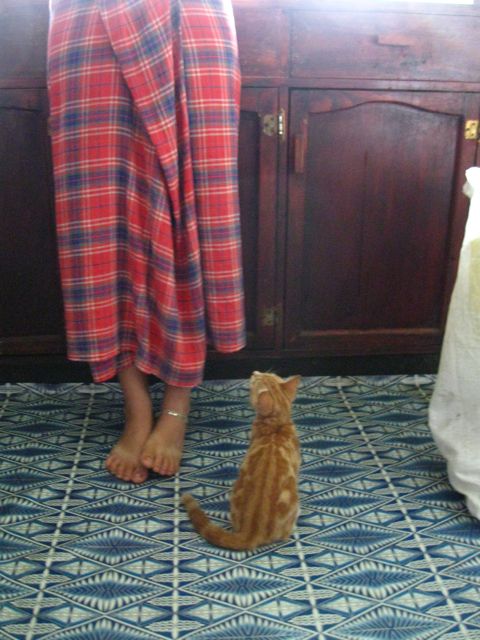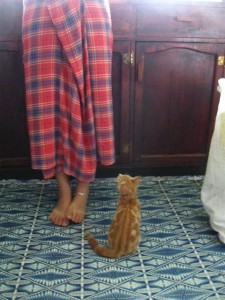It was lost. I searched frantically in my frayed backpack, ignoring the chickens clucking disapprovingly at me from their perch in my temporary thatched Amazonian hut. No sign of my patadyong, what some call a sarong, or a lavalava, or perhaps maybe just a plain wrap. The circular skirt-length loop of cotton fabric had become essential in the surprisingly cold Amazonian nights when, huddled shivering in my hammock, I pulled it over me as a rudimentary blanket and tried to sleep. Not only that, but it was my towel when I went down to the stream to bathe, and my laundry bag where I stacked clothes ready to scrub in the washing pool. To me, it was also my home.
Red plaid and soft through age and use, it had been made for me when I was seven and living in the middle of the Filipino city, Iloilo, by our house helper whose name I shared: Elena. I called her Manang Elena, or Older Sister Elena, and I was Younger Sister Elena. I folded it over to cover my short legs as a skirt, and she showed me how to wrap, turn, turn, and tuck so that it would stay up. When she told me that all women used to wear it like this, I felt like I was learning a part of my own history. I looked with pride at my new garment that so identified me with the beautiful ladies that dressed up at traditional events in lacy kimona and sparkling, plaid-striped patadyong.
The patadyong left the Philippines with me and together we traversed the Pacific to the United States. It reminded me of home as I navigated the strange new country. As I struggled to blend in with bizarre American ways, I sometimes forgot about it, and then, as to a long lost friend, I soon returned to its comforting cotton folds.
By the time I entered university, it had accompanied me in every international trip I had taken, serving as my towel, my skirt, my pillow, my sleepwear, my blanket, and my bag across three continents.
And so, as I frantically searched in the middle of the Amazonian rainforest, I was devastated. Had I lost it in the village we had just visited, a day’s canoe ride away? Had it slipped from my open bag into the muddy river waters, to gently settle on a sleeping stingray?
Before long, a large group of people were helping me retrace my steps and scouring the community, transcending language and cultural barriers for what I’m sure looked like an idiotic exercise. The errant patadyong was finally found, crammed in an unlikely corner, and suddenly, with the gracious help I’d been shown by my hosts, and the patadyong safely back in my backpack, I was home.
Despite being cavalier about the rest of my possessions – because you never know when you might move and have to give most of them away – certain things become my symbols of home.
Now, in the sunny southern Pacific country of Tonga, I have found myself in the land of patadyongs. I have learned that here, a patadyong, which they called a tupenu, was also good for keeping your swimming pants covered before you went to the beach, was an acceptable way to wear long shorts if worn over them, and served as an excellent scarf to keep the sun off your head.
To my delight, in Tonga I can wear a nice patadyong to formal events, decorated with a woven belt, an old one as swimwear, and admire the ones worn by beautiful ladies in church. But even in this abundance of wrap wear, none can replace my own patadyong. I still use it as a laundry bag, a sleeping bag, and a skirt, just like I have in the rest of the world, and every time I use it, I know I’m home.


Elena, you are an amazing young woman, a world/culture traveler with a gift for making others feel at home. This gift comes from your wellspring of experience of being a global nomad yourself. You make us proud to be your parents.
LikeLike